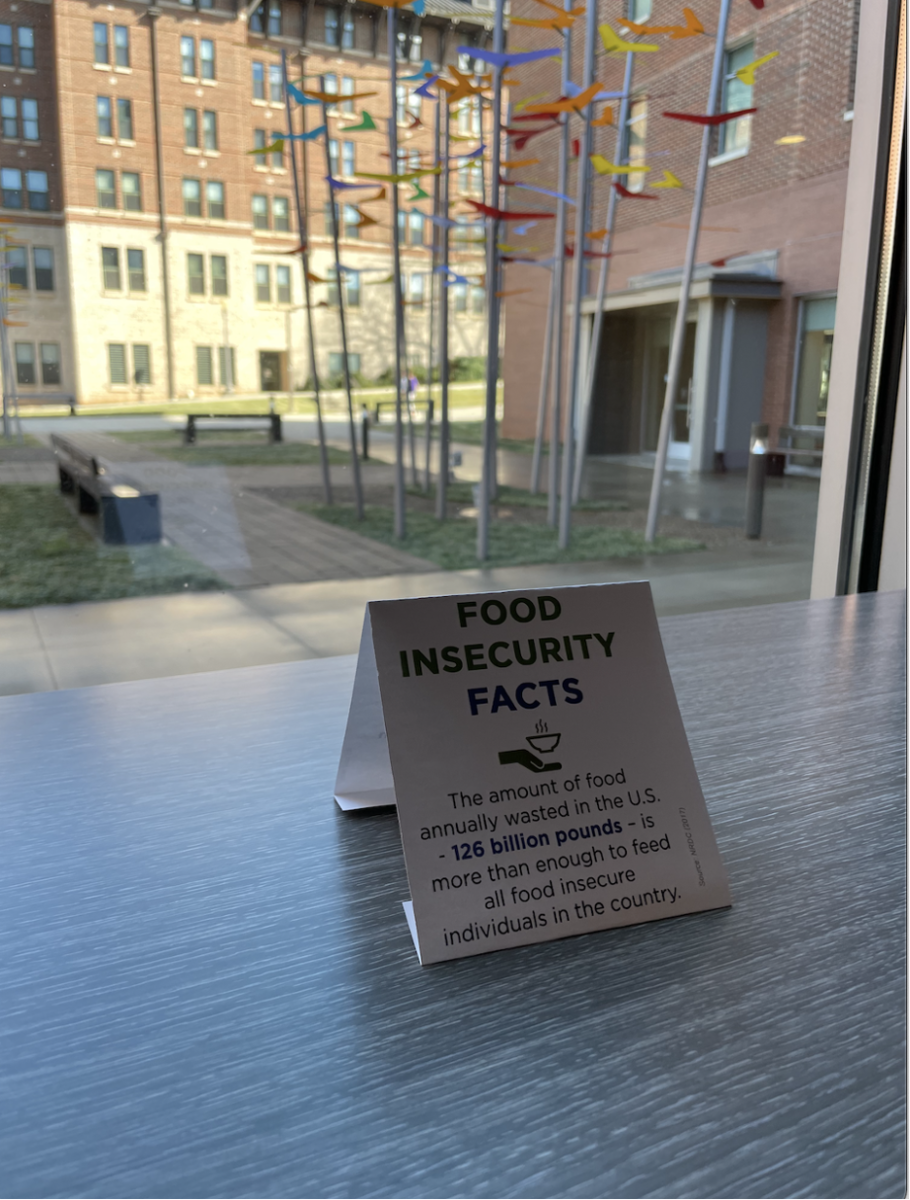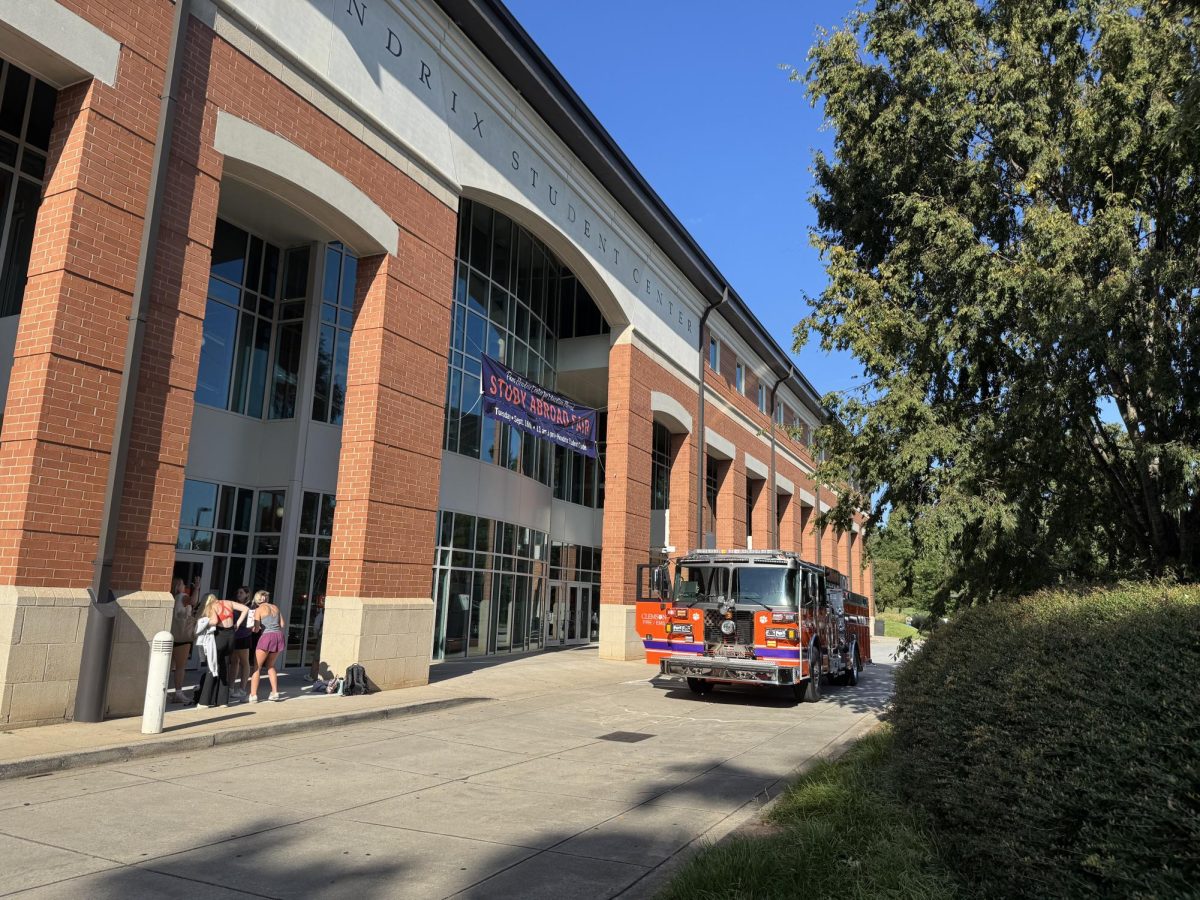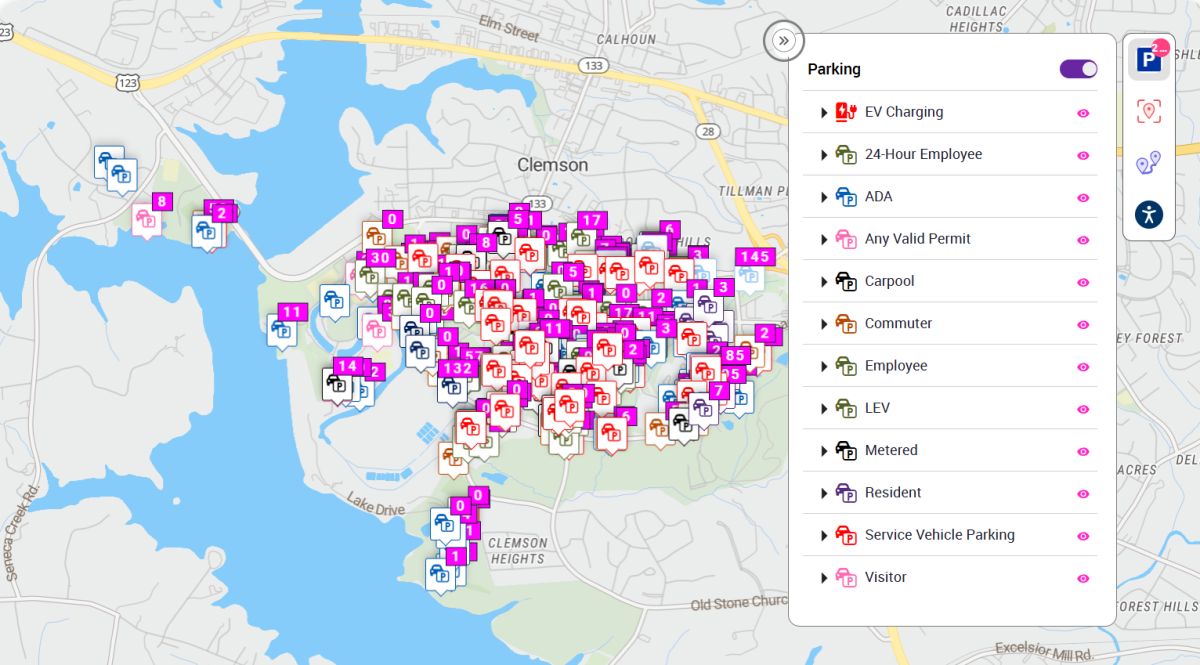If you visited the McAlister or Schilletter dining halls this past week, you likely didn’t miss the new menus near each station or the various tables set up in the dining halls. These initiatives are all part of a food waste week to promote food sustainability and reduce our carbon footprint.
This week, each station had printed menus that had either a green, yellow or red label next to each of the food items which represented the carbon footprint level. Students from the Clemson Energy Visualization & Analytics Center (CEVAC) calculated each item’s CO2e level, which is the grams of carbon dioxide equivalent used for growing, processing and transporting the food.
The green range, which is made from less than 60 grams of CO2e, includes items such as green beans and the crispy french fries. The yellow range, from 60-200 grams of CO2e, includes items such as turkey sausage links and jasmine rices. The red range, which is made from greater than 200 grams CO2e, includes items such as chicken tenders and cheeseburgers.
In fact, the item with the largest CO2e level was the mushroom and swiss burger, with 2,305.11 grams of CO2e.
Much of the food in Clemson’s dining halls is sourced from local farmers, growers and distributors in neighboring states. Local food not only benefits the farmers and producers but it also aids in reducing our carbon footprint. Composting is also available at Clemson’s Cherry Crossing research facility for food waste and scraps.
Surplus food is donated to the Golden Corner Food Pantry, where in fall 2019, over 7,200 pounds of surplus food was donated. These initiatives are all part of Clemson Dining’s food recovery hierarchy, which includes a future planning process to limit the amount of food waste.
Throughout food waste week, various tables were set up in the McAlister and Schilletter dining halls that included pencils that could be planted after use or samples for sugar cookies made out of coffee grounds.
A card placed on dining tables displayed a startling fact: the amount of food annually wasted in the U.S. – 126 billion pounds – is more than enough to feed all food insecure individuals in the country.
Staff in McAlister Dining Hall give out snacks as part of food waste week.
















